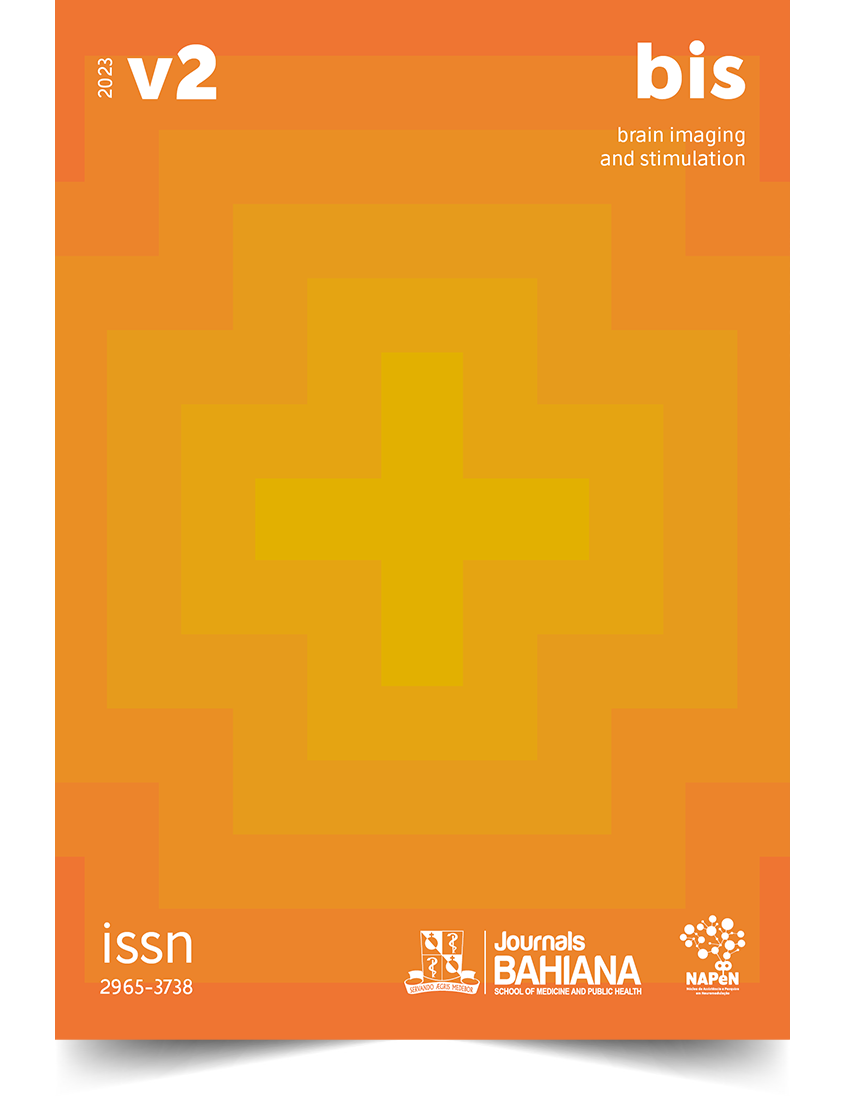The main non-invasive neuromodulatory techniques: an infographic
DOI:
https://doi.org/10.17267/2965-3738bis.2023.e4823Keywords:
tDCS, NIBS, Neuromodulation, TMSAbstract
INTRODUCTION: This infographic aims to present the main non-invasive neuromodulatory techniques that can be used to assess and/or modulate central nervous system excitability. Single- and paired-pulse transcranial magnetic stimulation (TMS) can be used to assess brain excitability through the delivery of magnetic pulses over the cerebral cortex. The motor evoked potential is an indirect measure of motor cortex excitability and is the most used cortical measure of excitability. RESULTS: Neuromodulation may be achieved through several techniques, which may be used to promote top-down or bottom-up effects. Among the top-down techniques is direct current stimulation (DCS) which can change its nomenclature according to the stimulation target, for example, transcranial (tDCS), or cerebellar (ctDCS). In addition, also can be included in top-down techniques the transcranial random noise stimulation (tRNS), transcranial alternate current stimulation (tACS), and repetitive TMS (rTMS). On other hand, the bottom-up techniques include the peripheral electrical stimulation (PES), transcutaneous auricular vagus nerve stimulation (taVNS), transcutaneous spinal direct current stimulation (tsDCS), and repetitive peripheral magnetic stimulation (rPMS). CONCLUSION: The neuromodulatory effects are dependent on several parameters that can be specific to physical principles (electrical or magnetic). For example, in repetitive P/TMS the frequency, type and angular orientation of coil, distance between the coil and the brain, pulse waveform, and pattern of stimulation are presented as important parameters able to interfere with the quality of stimulation. The same can be observed in tDCS, ctDCS, and tsDCS with the polarity and shape and montage of electrode, intensity, site and duration of stimulation, and current density.
Downloads
References
(1) Woods AJ, Antal A, Bikson M, Boggio PS, Brunoni AR, Celnik P, et al. A technical guide to tDCS, and related non-invasive brain stimulation tools. Clin Neurophysiol. 2016;127(2):1031–48. https://doi.org/10.1016/j.clinph.2015.11.012
(2) Rossi S, Antal A, Bestmann S, Bikson M, Brewer C, Brockmöller J, et al. Safety and recommendations for TMS use in healthy subjects and patient populations, with updates on training, ethical and regulatory issues: Expert Guidelines. Clin Neurophysiol. 2021;132(1):269–306. https://doi.org/10.1016/j.clinph.2020.10.003
(3) Badran BW, Yu AB, Adair D, Mappin G, DeVries WH, Jenkins DD, et al. Laboratory Administration of Transcutaneous Auricular Vagus Nerve Stimulation (taVNS): Technique, Targeting, and Considerations. J Vis Exp. 2019;143:e58984. http://dx.doi.org/10.3791/58984
(4) Chipchase LS, Schabrun SM, Hodges PW. Peripheral electrical stimulation to induce cortical plasticity: a systematic review of stimulus parameters. Clin Neurophysiol. 2011;122(3):456–63. https://doi.org/10.1016/j.clinph.2010.07.025
(5) Lefaucheur JP, André-Obadia N, Antal A, Ayache SS, Baeken C, Benninger DH, et al. Evidence-based guidelines on the therapeutic use of repetitive transcranial magnetic stimulation (rTMS). Clin Neurophysiol. 2014;125(11):2150–206. http://dx.doi.org/10.1016/j.clinph.2014.05.021
(6) Fregni F, El-Hagrassy MM, Pacheco-Barrios K, Carvalho S, Leite J, Simis M, et al. Evidence-Based Guidelines and Secondary Meta-Analysis for the Use of Transcranial Direct Current Stimulation in Neurological and Psychiatric Disorders. Int J Neuropsychopharmacol. 2021;24(4):256–313. http://dx.doi.org/10.1093/ijnp/pyaa051
(7) Lefaucheur JP, Antal A, Ayache SS, Benninger DH, Brunelin J, Cogiamanian F, et al. Evidence-based guidelines on the therapeutic use of transcranial direct current stimulation (tDCS). Clin Neurophysiol. 2017;128(1):56–92. http://dx.doi.org/10.1016/j.clinph.2016.10.087
Downloads
Published
Issue
Section
License
Copyright (c) 2023 Tiago da Silva Lopes, Larissa Conceição Dias Lopes, Tallya da Silva Lopes, Tallita da Silva Lopes, Lilian Becerra de Oliveira

This work is licensed under a Creative Commons Attribution 4.0 International License.
This work is licensed under a Creative Commons Attribution 4.0 International License.



